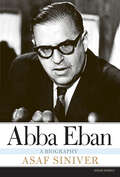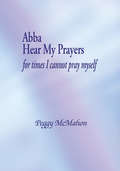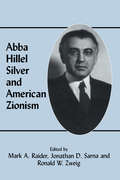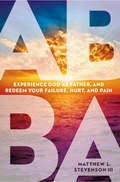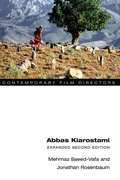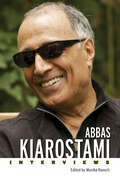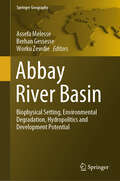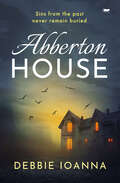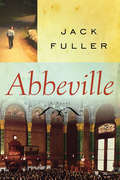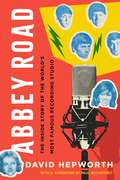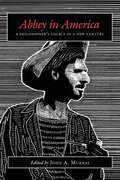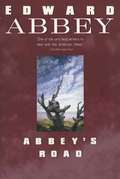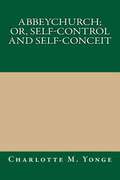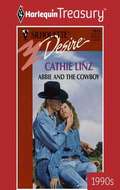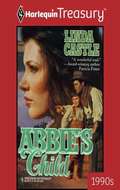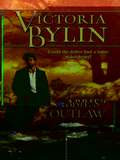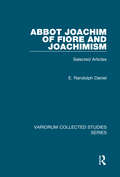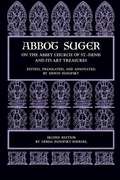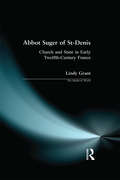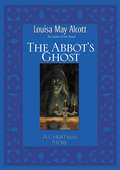- Table View
- List View
AbbVie
by Kevin Schulman Laura Little Samyukta Mullangi Stephen SchleicherThis case focuses on the impact of a novel regulatory pathway, the biosimilars pathway, on the strategy of a major pharmaceutical firm that finds its largest product (60% of revenue) at risk. The case reviews the rationale for the pathway, the emerging biosimilars market entrants, and a series of adverse financial forecasts for AbbVie. Given all of these risks, did the acquisition add value to shareholders? AbbVie made headlines in March 2015 when it announced its $21 billion acquisition of Pharmacyclics. AbbVie, a research-based pharmaceutical company, was founded in 2013 when Abbott split into AbbVie and Abbott Laboratories. Pharmacyclics is a biotechnology company that had received FDA approval in late 2013 for its flagship asset Imbrivica (ibrutinib), a biologic treatment for chronic lymphocytic leukemia and two other even rarer blood malignancies. Entering its second year on the market, Imbrivica was considered a breakthrough, with revenue expectations of $1 billion in 2015. At the time of the acquisition, AbbVie received more than 60% of its sales from the drug Humira, a biologic agent used to treat several autoimmune diseases and malignancies. However, Humira would soon lose patent protection and face competition from the new class of follow-on biologics, or biosimilars.
Abba Eban: A Biography
by Asaf Siniver“Based on interviews with dozens of people and research in more than twenty archival collections, [this] cleareyed biography deserves to be called definitive.” —Kirkus Reviews (starred review)Born in South Africa, educated in England, and ultimately a major figure in Israeli history, Abba Eban was a skilled debater, a master of multiple languages, and a passionate defender of the Jewish state. But his diplomatic presence was in many ways a contradiction unlike any the world has seen since. While he was celebrated internationally for his exceptional wit and his moderate, reasoned worldview, these same qualities painted him as elitist and foreign in his home country. The disparity in perception of Eban at home and abroad was such that both his critics and his friends agreed that he would have been a wonderful prime minister—in any country but Israel. In Abba Eban, Asaf Siniver paints a nuanced and complete portrait of one of the most complex figures in twentieth-century foreign affairs. We see Eban growing up and coming into his own as part of the Cambridge Union, and watch him steadily become known as “The Voice of Israel.” Siniver draws on a vast amount of interviews, writings, and other newly available material to show that, in his unceasing quest for stability and peace for Israel, Eban’s primary opposition often came from the homeland he was fighting for; no matter how many allies he gained abroad, the man never understood his own domestic politics well enough to be as effective in his pursuits as he hoped. The first examination of Eban in nearly forty years, this is a fascinating look at a life that still offers a valuable perspective on Israel today.“Siniver’s principal achievement is his artful documentation of the tension between Eban the intellectual and Eban the politician. Such lofty thoughts do not distract Mr. Siniver from listing the indiscretions and dishonesty to which Eban, in his politician’s guise, occasionally succumbed.” —The Wall Street Journal“Siniver’s levelheaded account looks at the history of Israel through the life of the country’s eloquent defender.” —TheNew York Times Book Review (Editor’s Choice)
Abba Hear My Prayers: For Times I Cannot Pray Myself
by Peggy McmahonPeggy McMahon's prayers are heartfelt and capture the raw, authentic emotions many face with a serious or life-threatening illness. Her prayers have touched lives well beyond their origin in Anchorage, Alaska. Written out of her own pain, the prayers of Peggy McMahon have ministered to many in times when they could not find the words to pray. Addressed to Abba, Father, the prayers are personal and heartfelt, written from a place of vulnerable trust. This book will be a comfort and source of power for many.
Abba Hillel Silver and American Zionism
by Jonathan D. Sarna Mark A. Raider Ronald W. ZweigThe essays collected here investigate Rabbi Silver's Zionist political leadership, his impact on American Judaism, ideological orientation and relations with the leaders of the Palestine Jewish community, World Zionist Organization and the Jewish State.
Abba: Experience God as Father and Redeem Your Failure, Hurt, and Pain
by Matthew L. Stevenson IIIYour brokenness is the key to knowing God as Father. God has an identity. He does not want to be known as a higher power or confined to our limited understanding and judgment of Him. Those who want to know the name of God—and most importantly want to know God as He desires to be known—can discover him as Abba. Matthew L. Stevenson III captures all the teachings of Jesus that demonstrated the Father. This book also highlights how aggressively Satan distorts the father role to fracture people&’s lives in the areas of: • Identity • Security • Failures • ConfidenceAbba addresses the key to a more fulfilling worship life as well as understanding God&’s heart toward the fatherless. A revelation of the father heart of God is needed more now than ever.
Abba: The Story Behind Every Track
by Benoît ClercTHE DEFINITIVE RECORDING HISTORY OF SWEDISH SUPERSTARS, ABBA, TOLD ALBUM-BY-ALBUM AND SONG-BY-SONG.Filled with fascinating photography (some rarely seen) and sensational behind-the-scenes details.Discover the untold stories behind ABBA's greatest hits, including the iconic 'Waterloo', 'Mamma Mia' and 'Dancing Queen' in this loving and thorough dissection of every album and song released by the pop megastars. From their first single in 1972, all the way up to their Grammy-nominated studio album, Voyage, and their revolutionary virtual tour, this definitive tome uncovers the full story behind every track that ABBA released.In over 500 pages, no stone is left unturned. Drawing upon decades of research, expert author Benoît Clerc recounts the circumstances that led to the composition of every song - detailing the inspiration behind the lyrics, the recording process and the instruments that shaped ABBA's distinctive sound.Featuring hundreds of photographs, including rare publicity stills, images of the instruments used by the band, and shots of the musicians on-stage and in-studio, Abba: All the Songs is the perfect gift for any fan of pop.
Abba: The Story Behind Every Track
by Benoît ClercTHE DEFINITIVE RECORDING HISTORY OF SWEDISH SUPERSTARS, ABBA, TOLD ALBUM-BY-ALBUM AND SONG-BY-SONG.Filled with fascinating photography (some rarely seen) and sensational behind-the-scenes details.Discover the untold stories behind ABBA's greatest hits, including the iconic 'Waterloo', 'Mamma Mia' and 'Dancing Queen' in this loving and thorough dissection of every album and song released by the pop megastars. From their first single in 1972, all the way up to their Grammy-nominated studio album, Voyage, and their revolutionary virtual tour, this definitive tome uncovers the full story behind every track that ABBA released.In over 500 pages, no stone is left unturned. Drawing upon decades of research, expert author Benoît Clerc recounts the circumstances that led to the composition of every song - detailing the inspiration behind the lyrics, the recording process and the instruments that shaped ABBA's distinctive sound.Featuring hundreds of photographs, including rare publicity stills, images of the instruments used by the band, and shots of the musicians on-stage and in-studio, Abba: All the Songs is the perfect gift for any fan of pop.
Abbas Kiarostami: Expanded Second Edition (Contemporary Film Directors)
by Jonathan Rosenbaum Mehrnaz Saeed-VafaBefore his death in 2016, Abbas Kiarostami wrote or directed more than thirty films in a career that mirrored Iranian cinema's rise as an international force. His 1997 feature Taste of Cherry made him the first Iranian filmmaker to win the Palme d'Or at Cannes. Critics' polls continue to place Close-Up (1990) and Through the Olive Trees (1994) among the masterpieces of world cinema. Yet Kiarostami's naturalistic impulses and winding complexity made him one of the most divisive--if influential--filmmakers of his time. In this expanded second edition, award-winning Iranian filmmaker Mehrnaz Saeed-Vafa and film critic Jonathan Rosenbaum renew their illuminating cross-cultural dialogue on Kiarostami's work. The pair chart the filmmaker's late-in-life turn toward art galleries, museums, still photography, and installations. They also bring their distinct but complementary perspectives to a new conversation on the experimental film Shirin. Finally, Rosenbaum offers an essay on watching Kiarostami at home while Saeed-Vafa conducts a deeply personal interview with the director on his career and his final feature, Like Someone in Love.
Abbas Kiarostami: Interviews (Conversations with Filmmakers Series)
by Monika RaeschThe cinephile community knows Abbas Kiarostami (1940–2016) as one of the most important filmmakers of the previous decades. This volume illustrates why the Iranian filmmaker achieved critical acclaim around the globe and details his many contributions to the art of filmmaking. Kiarostami began his illustrious career in his native Iran in the 1970s, although European and American audiences did not begin to take notice until he released his 1987 feature Where’s the Friend’s House? His films defy established conventions, placing audiences as active viewers who must make decisions about actions and characters while watching the narratives unfold. He asks viewers to question the genre construct (Close-Up) and challenges them to determine how to watch and imagine a narrative (Ten and Shirin). In recognition for his approach to the craft, Kiarostami was awarded many honors during his lifetime, including the top prize at the Cannes Film Festival in 1997 for Taste of Cherry. In Abbas Kiarostami: Interviews, editor Monika Raesch collects eighteen interviews (several translated into English for the first time), lectures, and other materials that span Kiarostami’s career in the film industry. In addition to exploring his expertise, the texts provide insight into his life philosophy. This volume offers a well-rounded picture of the filmmaker through his conversations with journalists, film scholars, critics, students, and audience members.
Abbasid Belles-Lettres
by Julia Ashtiany T. M. Johnstone J. D. Latham R. B. Serjeant G. Rex SmithThis volume of The Cambridge History of Arabic Literature covers artistic prose and poetry produced in the heartland and provinces of the 'Abbasid empire during the second great period of Arabic literature, from the mid-eighth to the thirteenth centuries AD. 'Abbasid literature was characterised by the emergence of many new genres and of a scholarly and sophisticated critical consciousness. This volume deals chronologically with the main genres and provides extended studies of major poets, prose-writers and literary theorists. It concludes with a comprehensive survey of the relatively unknown literature of the Yemen to appear in a European language since the manuscript discoveries of recent years. To make the material accessible to non-specialist readers, 'Abbasid authors are quoted in English translation wherever possible, and clear explanations of their literary techniques and conventions are provided. With chapters by leading specialists from the Middle East, Europe and America, the volume represents a wide cross-section of current academic opinion.
Abbay River Basin: Biophysical Setting, Environmental Degradation, Hydropolitics and Development Potential (Springer Geography)
by Assefa Melesse Berhan Gessesse Worku ZewdieThe book focuses on the Abbay Basin biophysical setting, the status of natural resources and degradation processes, agricultural practices, environmental resource conservation efforts, and the role of Earth observation and geospatial technologies in monitoring and planning for the wise utilization of natural resources under severe land resource degradation and climate change. It provides a collection of techniques and syntheses from the perspectives of geospatial science and technology application dimensions as well as legal and sociopolitical circumstances. It utilizes comprehensive data, algorithms, methods, and tools to produce and disseminate high-quality information for the Abbay Basin. It also produces empirical data and knowledge on what has been done thus far regarding the application of EO data and geospatial technologies for sustainable utilization of natural resources in the Abbay Basin and synthesizes previous studies to develop strong and consolidated information on the basin. The book will also have distinct outlooks on the purpose and contribution of satellite imagery and geospatial data as well as improved analytics for basin-wide resource management.
Abberton House
by Debbie IoannaA family moves into a farmhouse in a quiet English village—but mysterious events a century earlier haunt their new home . . . In 1916, the Great War is underway and Henry has been called up, leaving his wife and three children in their North Yorkshire farmhouse. They keep in touch via letters—but when he returns to Abberton House, his whole family has disappeared. There are whispers of an affair, but Henry refuses to believe it—and spends the rest of his life searching . . . That long-ago mystery is still talked about in the village a hundred years later when Adam and Catherine move into the house with their five-year-old daughter. As they settle in, strange things begin to happen. Little Bella speaks to imaginary friends. Faces are seen in the windows, and footsteps sound from above. As time goes on, Catherine digs deeper into the history of Abberton House and learns of some chilling truths—or are they just rumours? And will Catherine and Adam have to take drastic action to rid the house of the angry spirits before any more damage is done?
Abbeville
by Jack FullerUntil the dot.com bubble burst, George Bailey never gave much thought to why his grandfather seemed so happy.But then George's wealth vanished, rocking his self-confidence, threatening his family's security and making his adolescent son's difficult life even more painful. Returning to the little Central Illinois farm town of Abbeville, where his grandfather had prospered and then fallen into ruin, flattened during the Depression, George seeks out the details of this remarkable man's rise, fall, and spiritual rebirth, hoping he might find a way to recover himself.Abbeville sweeps through the history of late-19th through early-21st century America-among loggers stripping the North Woods bare, at the World's Columbian Exposition of 1893, with French soldiers at the Battle of Verdun, into the abyss of the Depression, and finally toward the new millennium's own nightmares. At the same time it examines life at its most intimate. How can one hold onto meaning amidst the brutally indifferent cycles of war and peace, flood and drought, boom and bust, life and death?In clean, evocative prose that reveals the complexity of people's moral and spiritual lives, Fuller tells the simple story of a man riding the crests and chasms of the 20th century, struggling through personal grief, war, and material failure to find a place where the spirit may repose. An American story about rediscovering where we've been and how we've come to be who we are today, Abbeville tells the tale of the world in small, of one man's pilgrimage to come to terms with himself while learning to embrace the world around him.
Abbeville
by Jack FullerUntil the dot.com bubble burst, George Bailey never gave much thought to why his grandfather seemed so happy.But then George's wealth vanished, rocking his self-confidence, threatening his family's security and making his adolescent son's difficult life even more painful. Returning to the little Central Illinois farm town of Abbeville, where his grandfather had prospered and then fallen into ruin, flattened during the Depression, George seeks out the details of this remarkable man's rise, fall, and spiritual rebirth, hoping he might find a way to recover himself.Abbeville sweeps through the history of late-19th through early-21st century America-among loggers stripping the North Woods bare, at the World's Columbian Exposition of 1893, with French soldiers at the Battle of Verdun, into the abyss of the Depression, and finally toward the new millennium's own nightmares. At the same time it examines life at its most intimate. How can one hold onto meaning amidst the brutally indifferent cycles of war and peace, flood and drought, boom and bust, life and death?In clean, evocative prose that reveals the complexity of people's moral and spiritual lives, Fuller tells the simple story of a man riding the crests and chasms of the 20th century, struggling through personal grief, war, and material failure to find a place where the spirit may repose. An American story about rediscovering where we've been and how we've come to be who we are today, Abbeville tells the tale of the world in small, of one man's pilgrimage to come to terms with himself while learning to embrace the world around him.
Abbey Road: The Inside Story of the World's Most Famous Recording Studio
by David HepworthThe incredible history of how Abbey Road became the most famous recording studio in the world. "There are certain things that are mythical. Abbey Road is mythical."—Nile Rodgers Many people will recognize the famous crosswalk. Some visitors may have graffitied their name on its hallowed outer walls. Others might even have managed to penetrate the iron gates. But what draws in these thousands of fans here, year after year? What is it that really happens behind the doors of the most celebrated recording studio in the world? It may have begun life as an affluent suburban house, but it soon became a creative hub renowned around the world as a place where great music, ground-breaking sounds, and unforgettable tunes were forged. It is nothing less than a witness to, and a key participant in, the history of popular music itself. What has been going on there for over ninety years has called for skills that are musical, creative, technical, mechanical, interpersonal, logistical, managerial, chemical and, romantics might be tempted add, close to magic. The history of Abbey Road may just make you believe.
Abbey in America: A Philosopher's Legacy in a New Century
by John A. MurrayMore than twenty-five years after his death, iconic writer and nature activist Edward Abbey (1929–1989) remains an influential presence in the American environmental movement. Abbey&’s best known works continue to be widely read and inspire discourse on the key issues facing contemporary American society, particularly with respect to urbanization and technology. Abbey in America, published forty years after Abbey&’s popular novel The Monkey Wrench Gang, features an all-star list of contributors, including journalists, authors, scholars, and two of Abbey&’s best friends as they explore Abbey&’s ideas and legacy through their unique literary, personal, and scholarly perspectives.
Abbey's Road
by Edward AbbeAbbey's explorations include the territory of the Rio Grande in Texas, Canyonlands National Park and Lake Powell in Utah. He takes readers to such varied places as Scotland, the interior of Australia, the Sierra Madre, and Isla de la Sombra in Mexico.
Abbeychurch; Or, Self-Control and Self-Conceit
by Charlotte M. YongeOne summer afternoon, Helen Woodbourne returned from her daily walk with her sisters, and immediately repaired to the school-room, in order to put the finishing touches to a drawing, with which she had been engaged during the greater part of the morning. <P> <P> She had not been long established there, before her sister Katherine came in, and, taking her favourite station, leaning against the window shutter so as to command a good view of the street, she began, 'Helen, do you know that the Consecration is to be on Thursday the twenty-eighth, instead of the Tuesday after?' 'I know Lizzie wished that it could be so,' said Helen, 'because the twenty-eighth is St. Augustine's day; but I thought that the Bishop had appointed Tuesday. ' 'But Papa wrote to him, and he has altered the day as Papa wished; I heard Mamma and Mr. Somerville talking about it just now when I went into the drawing-room,' answered Katherine. 'Will everything be ready in time?' said Helen. 'Dear me!' cried Katherine, 'I wonder if it will. What is to be done if that tiresome Miss Dighten does not send home our dresses in time? We must go and hurry her to-morrow. And I must get Mamma to go to Baysmouth this week to get our ribbons. I looked over all Mr. Green's on Monday, and he has not one bit of pink satin ribbon wide enough, or fit to be seen. '
Abbie And The Cowboy
by Cathie LinzTHE COWBOY KIDNAPS A BRIDE Dylan Janos had no intention of getting married for real. When he whisked Abbie Turner away, the footloose rancher was simply reviving a romantic Gypsy tradition. All he wanted were sizzling memories to take along when he left. And he would leave. He always did…. THE BRIDE ISN'T OBJECTING! Abbie knew Dylan was kidding about marriage. He wasn't interested in settling down—just as Abbie had no intention of falling for a roaming rodeo rider. So why not skip the wedding…and get right to the honeymoon! Three Weddings and a Gift
Abbie's Child
by Linda CastleAbigail's Child… Widow Abigail Cooprel had been devastated by the news that her daughter had died at birth and been "switched" with a healthy baby. Now, six years later, she cherished her son as if her were truly her own, and there was nothing she wouldn't do to keep him. The years he'd roamed the Colorado mining camps searching for his long-lost wife and the child he'd never seen had taken their toll on Willem Tremain. Lonely and bereft, he'd almost given up hope, until Abigail and her blue-eyed boy made him ache to love again.
Abbie's Outlaw
by Victoria Bylin"You gotta face the ghosts."More poignant advice the Reverend John Leaf had yet to hear for dealing with his haunted past. A man of God now, he'd done things that would shame the devil himself, not the least of which was loving-and leaving-Abbie Windsor, a woman of true grit and uncommon courage, a woman who could make him whole...!Abbie Windsor had weathered dark days with only the steel of her will for cold comfort. Yet today John Leaf-who'd awakened her womanhood, who'd given her a daughter-offered her his protection. But could she accept a marriage in name only to the man who shared her soul?
Abbot Joachim of Fiore and Joachimism: Selected Articles (Variorum Collected Studies)
by E. Randolph DanielIn the articles included in this collection, Professor Daniel argues that Abbot Joachim of Fiore was a disciple of Bernard of Clairvaux whose tertius status was reformist, not millenialist. Like the other reformists, Gerhoch of Reichersberg and Hildegard of Bingen, Joachim looked forward to the coming of a thoroughly reformed, holy church to be achieved in the near future by reform of the episcopate and the clergy. The status of the Holy Spirit was the culmination of the preceding status, not a radically new beginning. Apocalypticism in both its reformist and in its imperialist versions was part of the mainstream, despite the efforts of the schoolmen to suppress it. The author also sheds significant new light on apocalyptic thinking in the mid-fourteenth century with a thorough analysis of Henry of Kirkstede's vade mecum, Cambridge Corpus Christi 404 and his first edition of Henry's De antichristo et de fine mundi. This study, and three others, are published here for the first time.
Abbot Suger On The Abbey Church Of St. Denis And Its Art Treasures
by Abbot Suger Gerda Panofsky-Soergel Erwin PanofskyThis revised edition incorporates the additions and corrections recorded by Erwin Panofsky until the time of his death in 1968. Gerda Panofsky-Soergel has updated the commentary in the light of new material, and the bibliography that she has prepared reflects the scholarship on St. -Denis in the last three decades. She has obtained some additional and more recent photographs, and the illustrations include a new ground plan and a new section of the chevet of the Abbey Church, both drawn under the supervision of Sumner McKnight Crosby.
Abbot Suger of St-Denis: Church and State in Early Twelfth-Century France (The Medieval World)
by David Bates Lindy GrantBased on a fresh reading of primary sources, Lindy Grant's comprehensive biography of Abbot Suger (1081-1151) provides a reassessment of a key figure of the twelfth century. Active in secular and religious affairs alike - Suger was Regent of France and also abbot of one of the most important abbeys in Europe during the time of the Gregorian reforms. But he is primarily remembered as a great artistic patron whose commissions included buildings in the new Gothic style. Lindy Grant reviews him in all these roles - and offers a corrective to the current tendency to exaggerate his role as architect of both French royal power and the new gothic form.
Abbot's Ghost
by Louisa May Alcott Stephen W. Hines<P>Maurice Traherne is wrongly accused of fraud and gambling and must play a careful hand if he is to win his love, Octavia, from the grasp of other, less honorable men and retain the trust of those who had faith in him.<P> Traherne is temporarily crippled saving the life of his well-born friend, Jaspar.<P> Thus, Jaspar is assured of inheriting his father's estate, but it is expected that Traherne will inherit great wealth as gratitude for saving the heir. <P>But--surprise!--on the death of Jaspar's father all are shocked to learn that Traherne has been disinherited: the will has been changed at the last minute and only the suffering Traherne knows why but won't tell and then he falls in love with Jaspar's sister, the fair Octavia.<P> However, Octavia is forbidden to marry, as Traherne is penniless.

